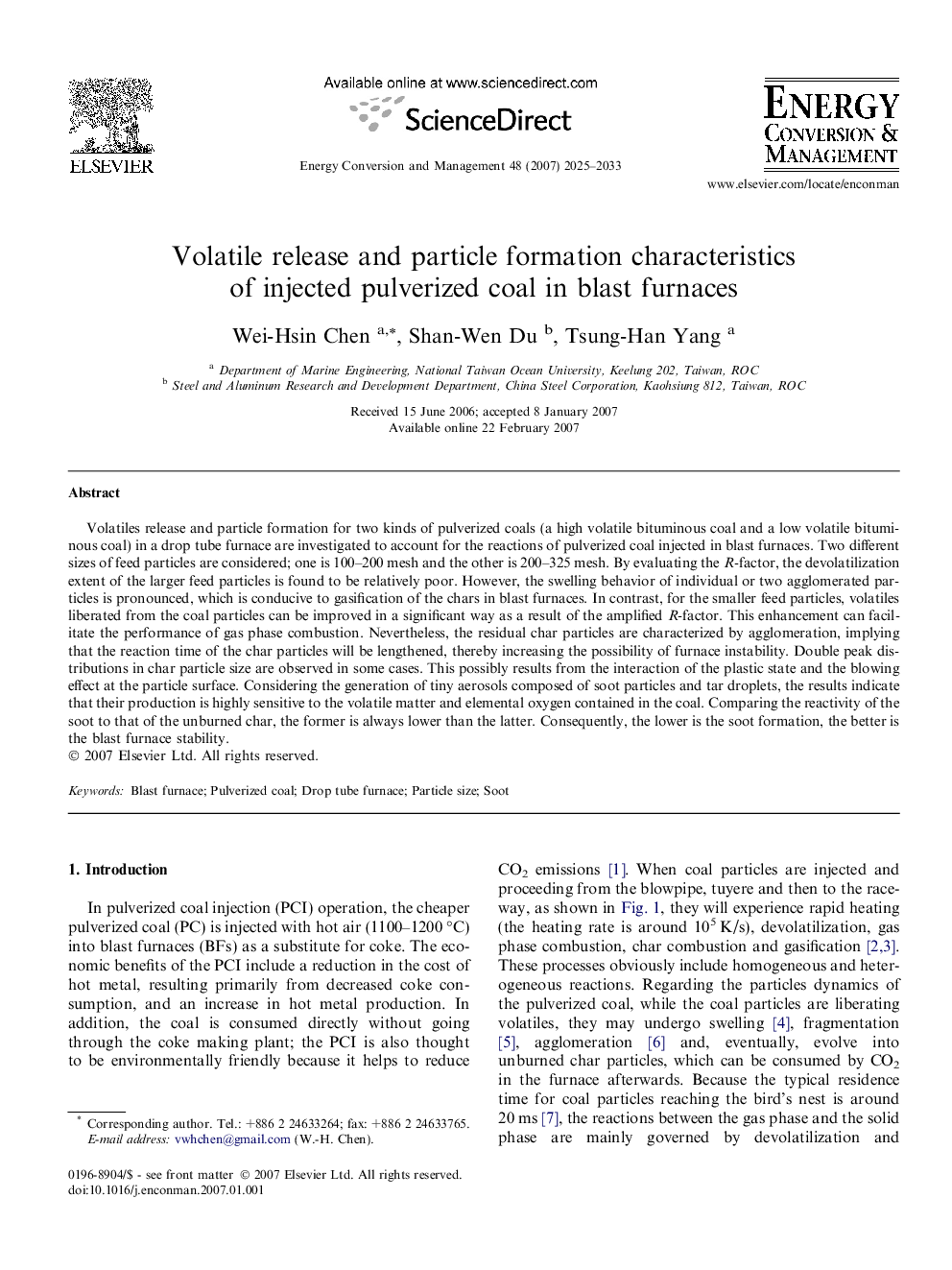| کد مقاله | کد نشریه | سال انتشار | مقاله انگلیسی | نسخه تمام متن |
|---|---|---|---|---|
| 772975 | 897767 | 2007 | 9 صفحه PDF | دانلود رایگان |

Volatiles release and particle formation for two kinds of pulverized coals (a high volatile bituminous coal and a low volatile bituminous coal) in a drop tube furnace are investigated to account for the reactions of pulverized coal injected in blast furnaces. Two different sizes of feed particles are considered; one is 100–200 mesh and the other is 200–325 mesh. By evaluating the R-factor, the devolatilization extent of the larger feed particles is found to be relatively poor. However, the swelling behavior of individual or two agglomerated particles is pronounced, which is conducive to gasification of the chars in blast furnaces. In contrast, for the smaller feed particles, volatiles liberated from the coal particles can be improved in a significant way as a result of the amplified R-factor. This enhancement can facilitate the performance of gas phase combustion. Nevertheless, the residual char particles are characterized by agglomeration, implying that the reaction time of the char particles will be lengthened, thereby increasing the possibility of furnace instability. Double peak distributions in char particle size are observed in some cases. This possibly results from the interaction of the plastic state and the blowing effect at the particle surface. Considering the generation of tiny aerosols composed of soot particles and tar droplets, the results indicate that their production is highly sensitive to the volatile matter and elemental oxygen contained in the coal. Comparing the reactivity of the soot to that of the unburned char, the former is always lower than the latter. Consequently, the lower is the soot formation, the better is the blast furnace stability.
Journal: Energy Conversion and Management - Volume 48, Issue 7, July 2007, Pages 2025–2033